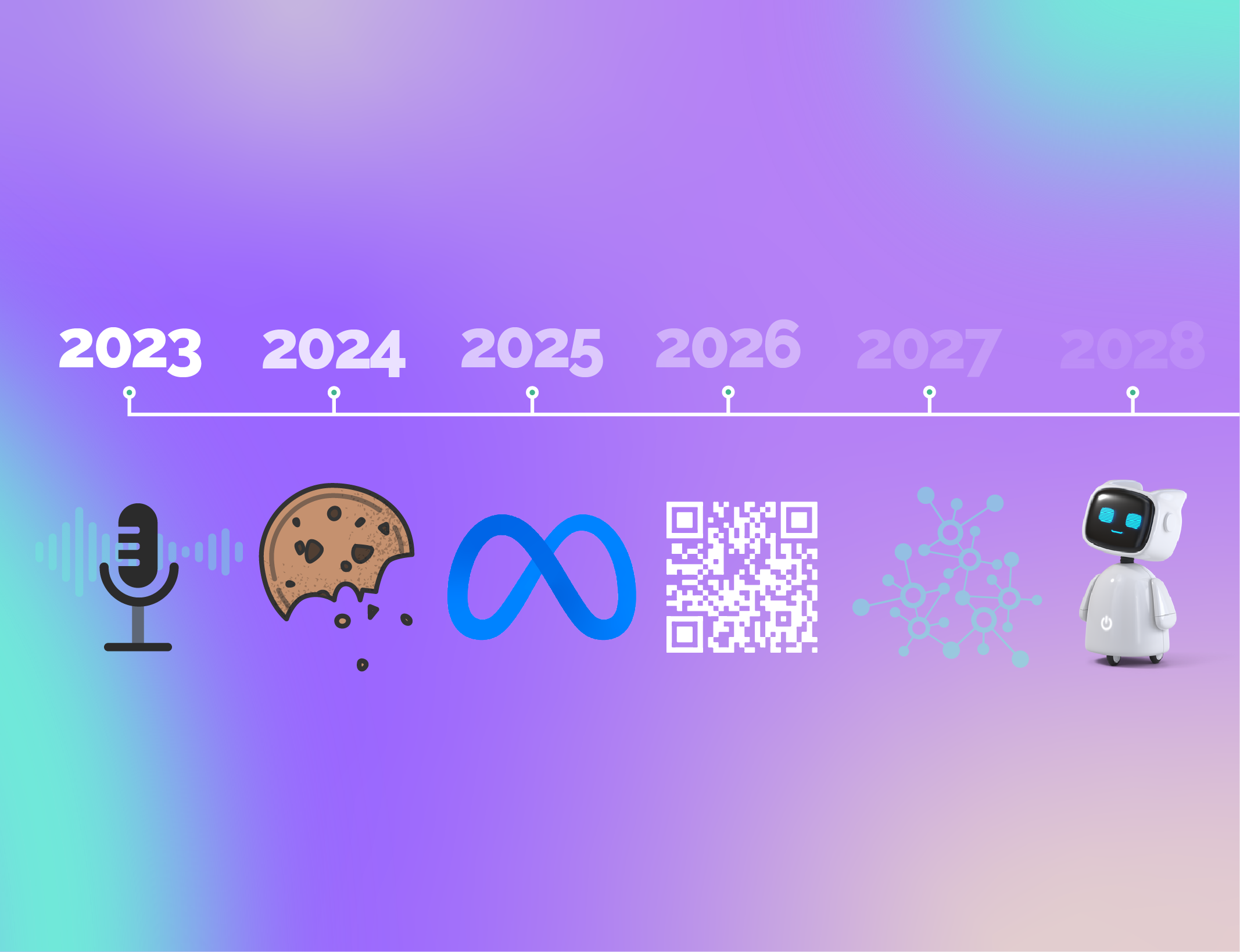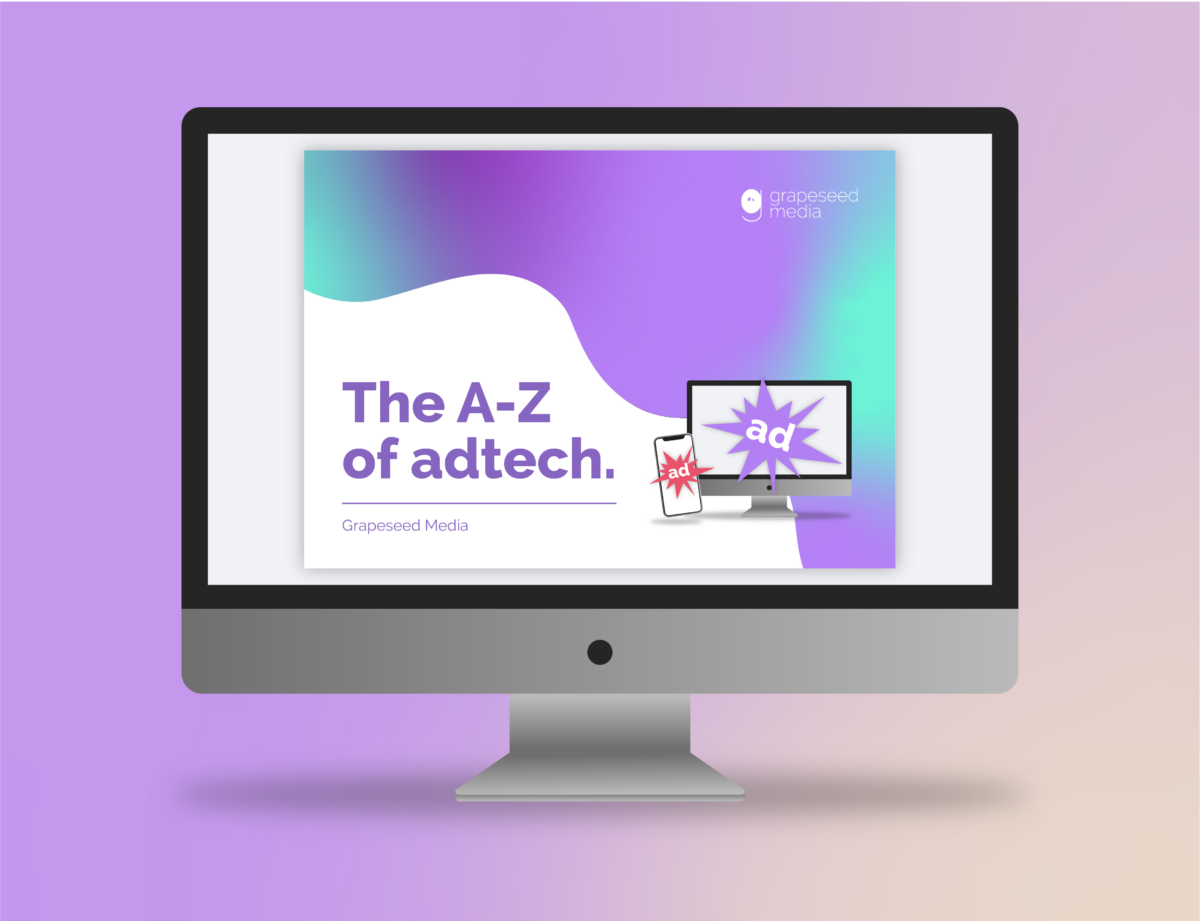The advertising industry moves fast. Just a few years ago, digital advertising was a risky bet — now, though, it’s the norm.
In 2022, digital ad spending is predicted to surpass $600 billion for the first time — a figure set to climb to $876 billion by 2026.
As new technologies continue to emerge and consumer habits and expectations evolve, agencies and brands need to stay on top of the latest digital advertising trends.
This article will cover 11 of the most promising trends to look out for in 2023 and beyond.
1. (Shorter) Video Ads Reign
There can only be one king of content, and right now, it’s video. Video continues to be one of the most prominent digital marketing trends of the moment, and 93% of marketers believe video converts better than any other type of content marketing format.
The popularity of video content shows no signs of slowing down — in 2021, there was a 178% increase in video creation compared to 2020, according to Vidyard.
One significant trend to note is that video ads are getting shorter — 56% are now less than two minutes long. However, marketers will have to optimize their video content for each platform since, according to HubSpot, users expect different lengths for their video content on different platforms.
If you’re using video marketing as part of your content marketing strategy, these benchmarks from HubSpot will help you optimize your content for each platform:
- Instagram — 30 seconds. Our brains process visuals 60,000 times faster than text, so scrolling is faster on this platform than on others. Remember to keep the hook (the most engaging part) of your video shorter than 15 seconds!
- Twitter — 15 seconds or less. They don’t call it the ‘microblogging’ platform for nothing. Although Twitter allows videos up to 140 seconds, only the ones below 15 seconds consistently get featured.
- Facebook — one minute. HubSpot found their Facebook audience engages best with content that’s around one minute long.
- YouTube — ten minutes. Users gravitate to YouTube to consume video content by their favorite content creators, so it’s more suited to longer, more in-depth content. The 10-minute video might also be popular because that’s the point at which creators can insert ads into the video. YouTube Shorts, on the other hand, are a lot like Instagram stories, so the standard 15-second rule applies to those as well.
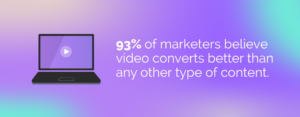
2. Programmatic Advertising Continues to Dominate
Programmatic advertising uses artificial intelligence to automatically buy and sell ad space in real-time, saving businesses vast amounts of time and reducing the cost per lead. So it’s hardly surprising that in 2022, over 90% of display ads will have been transacted programmatically, according to eMarketer.
Although the increase in programmatic advertising has slowed in 2022, marketers will have spent $123.22 billion on programmatic ads by the end of the year — and much of what’s driving this growth is the rise of Connected TV (CTV) advertising.
3. Connected TV Advertising Keeps Growing
CTV ad spend is set to grow to $74.88 billion dollars in 2023, and according to eMarketer, 2022 is the first year that video has surpassed non-video formats in programmatic ad spend.
The growth of CTV advertising is due to its effectiveness and reach — 84% of consumers say they’ve bought a product after watching a brand’s video, and in the US alone, 50% of households have at least one CTV device.
Although YouTube has been the dominant player in the CTV advertising space until now, eMarketer estimates it will account for 43.6% of programmatic ad spend in 2022, down from 54.6% in 2020.
YouTube’s share of programmatic CTV ads will continue to decrease as other streaming platforms step up their programmatic ad game. Meanwhile, as TikTok begins to draw increasing interest from advertisers, this will also contribute to the increase in programmatic ad spend on CTV.
4. Omnichannel Advertising Prepares to Enter the Physical Retail Space
Omnichannel marketing is a strategy used to unify brand messages across multiple channels and touchpoints. An omnichannel approach includes display, native, video, audio, CTV, and digital out-of-home (DOOH).
This trend isn’t limited solely to digital advertising, though — omnichannel is now poised to enter the physical retail space. Although 30% of the world’s population now shops online, people are craving a return to in-store shopping in the wake of the COVID-19 pandemic.
In fact, 59% of customers told Shopify they’d be likely to look at a product online and buy in-store — aka buy online, pick up in-store (BIPOS). This may be because 37% of people grow frustrated when a purchase takes too long to arrive, and 23% dislike paying extra for shipping.
Conversely, 54% of consumers want to look at a product in-store and buy online — otherwise known as showrooming. This has led to 32% of digitally native brands announcing that they plan to establish or expand pop-up experiences, while another 31% are planning to enter the physical retail space.
Venturing into physical retail opens up new opportunities in the realm of programmatic advertising — specifically, in DOOH. With DOOH, advertisers can use geotargeting to serve ads to their target audience via dynamic Digital Signage screens.
5. QR Codes Make Shopping Easier
A QR — or ‘Quick Response’ — code is the digital equivalent of a barcode and a great way to reach users on their mobile devices. Most smartphones have a QR scanner built into the camera, which activates a digital response when scanned.
With QR codes, the marketing possibilities are pretty much endless. You can use them to open a website — where you might display product information — or take another action, such as making a phone call or sending an email or social media message.
Creating a QR code is easy, and you can do it for free online. Once you’ve made it, you can place it on your website and display it next to your digital ads.
6. Marketers Innovate With Cookieless Advertising Solutions
Google’s announcement that it would be phasing out third-party cookies by 2024 sent the world of marketing into a tailspin. For years, advertisers have been using cookies to gather valuable customer data that helps them make their advertising campaigns more personalized and targeted, leading to higher conversion rates.
From 2024 onward, companies will only be able to rely on their own customer data — a fact which has 71% of agency and brand executives worried about the implications of a cookieless future. However, consumers will welcome more privacy — 42% regularly clear their browser history, 25% use private browsing, 22% decline cookies, and 20% use a VPN.
Marketers aren’t leaving the cookieless future up to chance — “don’t wait for Google” is the mantra currently circling the internet. The best advice so far is to collect plenty of first-party data (while being selective about what you collect and transparent about what you use it for) and use cookieless signals — such as device IDs and IP addresses — to target customers.
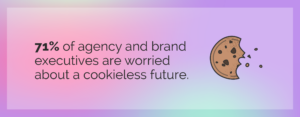
7. Voice Search Ads Become the Next Frontier
In 2022, 42.7% of US adults have used voice search on their mobile devices at least once a month, and 32% will use smart speakers for voice search just as often. It’s estimated that by 2025, 123.5 million adults in the US will use voice assistants at least once per month.
Voice searches represent a new opportunity for marketers — just as they currently optimize written and video content for SEO purposes, they will also need to start optimizing their ad campaigns to target voice search.
What form these ads will take remains to be seen, but they may include:
- Pre and post-roll ad placements played before or after the search query answer
- Screen-synced ads that appear on-screen while the voice search results are played
- Paid answers that play before the organic search results
- Data-driven ads based on the search provider’s database
8. Chatbots Start to Take Over Conversational Marketing
Conversational marketing mirrors the way humans interact with one another and creates an instant connection between the customer and the company.
With 90% of consumers now expecting an immediate response to an inquiry, chatbots will continue to be a way for businesses to offer 24/7 customer support without employing additional team members.
Using AI, chatbots can imitate conversational marketing to provide customers with immediate support and answers to simple questions
9. AI and Machine Learning Continue to Optimize Marketing Efforts
Speaking of AI, artificial intelligence and machine learning marketing tools have been growing in popularity for a while now, thanks to their ability to optimize impressions, click-through rates, bid levels, and targeting.
Marketing and sales represented 20% of AI adoption across all industries in 2021, second only to product development, and the AI market is predicted to grow to half a trillion dollars by 2024.
AI can improve personalization and customer experience in a number of ways, including:
- Predictive analytics that help you determine which audience segments are most likely to buy which product. They predict what type of content is likely to go viral, suggest types of content that are likely to be popular, and automate keyword selection and categorization.
- In email marketing, AI can optimize subject lines, mailshot timings, and newsletter personalization.
- An AI copywriting app such as Phrasee can decrease the cost-per-lead. For instance, Wowcher decreased its CPL by 31% using the platform.
10. Social Media Marketing Gets More Authentic
Despite the heavy reliance on AI and automation, consumers — especially Gen Z and Millennials — are craving the human touch. They want to connect with companies that they perceive as authentic.
Savvy brands are leveraging their social media platforms to raise brand awareness through user-generated content, marking a shift away from paid influencer marketing. This is because people trust real customer testimonials more than they trust branded advertising. In fact, 62% of people are more likely to click on an image that contains UGC than an image created by a brand.
UGC doesn’t stop at customers, though. Employee-generated content (EGC) is a subset of UGC that 52% of businesses are already using. We can expect to see more of it in 2023 and beyond, given that it generates eight times more engagement than branded content.
11. The Advertising Industry Gears Up to Join the Metaverse
The Metaverse has arrived, and users are into it. Thirty-three percent of people are extremely interested in participating in the Metaverse — with that figure jumping to 42% among Gen Z and Millennials. Meanwhile, only 15% of consumers say they’re not at all interested in it.
What will digital advertising look like in the Metaverse? No one knows for sure since Meta itself has said it will be created by everyone.
However, given that users mostly use it to watch TV and films (51%), play games (44%), browse products (43%), and watch live events like concerts (41%), it represents a huge opportunity for marketers.
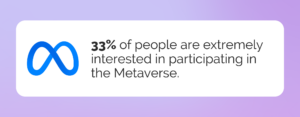
Stay Ahead of the Curve with Grapeseed Media
With all the developments going on in the world of advertising — from CTV and voice search ads to the Metaverse puzzle and ‘cookie-geddon’ — deciding on a digital advertising strategy can be overwhelming.
When you partner with a specialist agency like Grapeseed Media, you can rest assured that you’re supported by a team of ad-tech experts who stay on top of the latest trends, so you don’t have to. Contact us today to talk about your 2023 marketing strategy.

